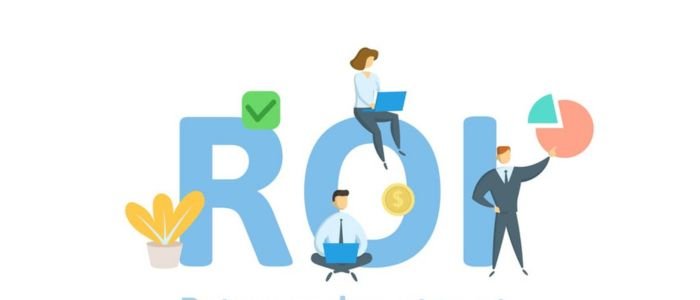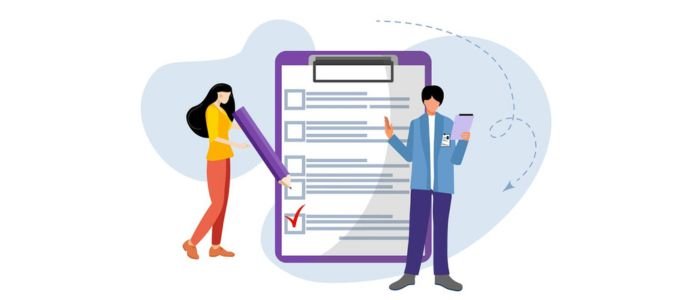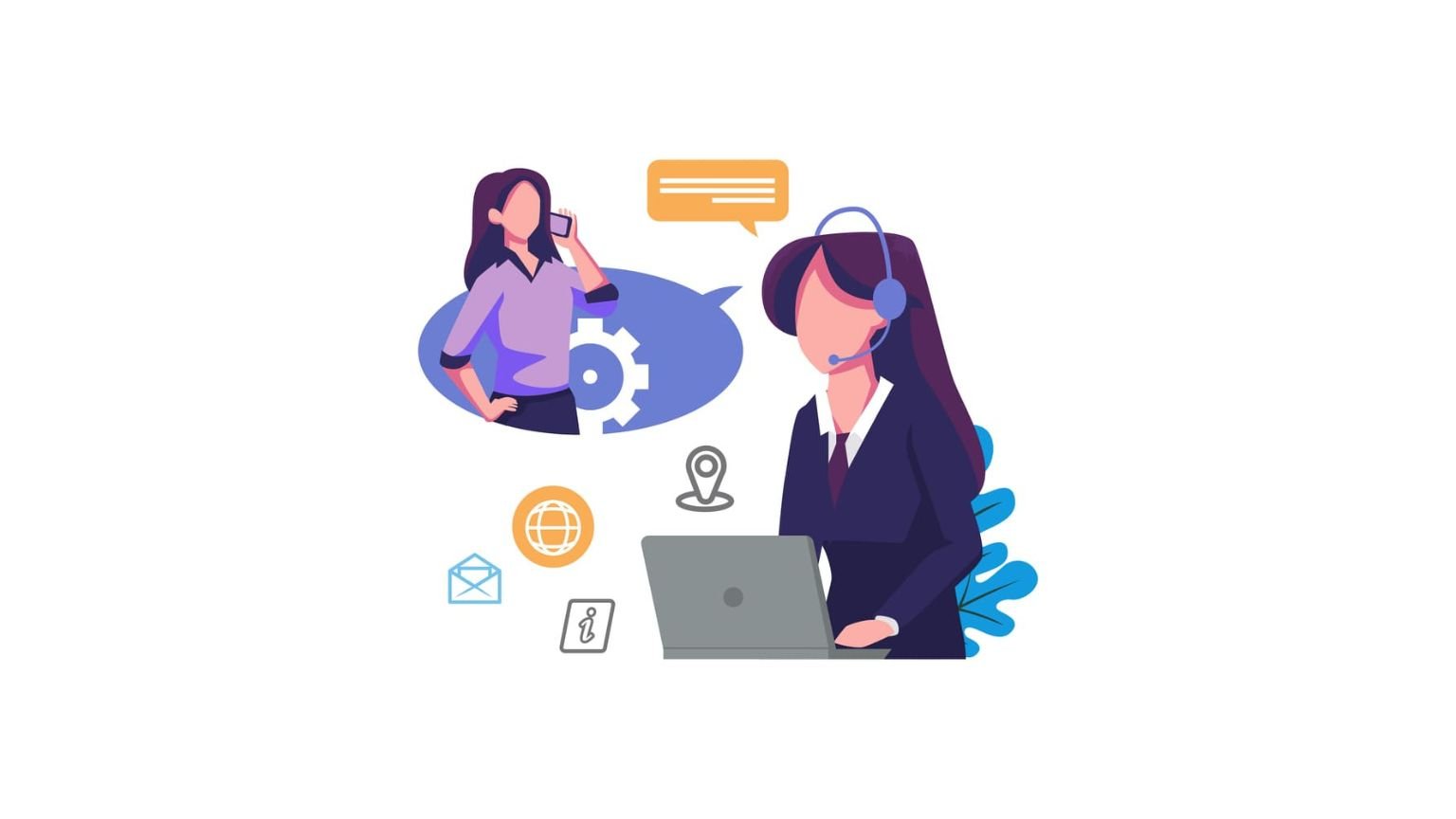A Guide to Pay-Per-Call Marketing for Addiction Treatment Centers
Pay-per-call marketing is a performance-based advertising model where companies only pay when they receive a phone call from a customer. Calls are typically generated via affiliate networks, websites, or ads, and they are tracked using unique phone numbers to scale results and quality. This model ensures that every marketing dollar is spent on genuine engagement. The global addiction treatment market was valued at USD 9.44 billion in 2024 and is expected to reach USD 16.22 billion by 2034, growing at a 5.56% CAGR. Addiction treatment is a highly urgent and personal decision. Individuals and families looking for help want to speak to a person instantly instead of filling out an online form and waiting for a response. Calling connects individuals with the trained admissions team directly, who can offer reassurance in a moment of crisis, verify insurance, and answer questions. For addiction treatment centers, this means faster patient intake and fewer wasted resources.
How Pay-Per-Call Marketing Works?
Pay-per-call marketing is designed around a single idea: addiction treatment centers pay only when they receive a call from a person actively seeking help. This model is effective in this field, where urgency and trust are crucial.
The Pay-Per-Call Process
The flow of a pay-per-call marketing campaign is simple but is carefully structured to guarantee quality. This streamlined process delivers callers who are already encouraged to recovery and reduces wasted time.
1. Publisher Promotion
A publisher runs ads on dedicated landing pages, directories, social media, and search engines. These ads have a trackable phone number.
2. Call Routing
When a person dials the number, the call is routed via the pay-per-call network’s system automatically. The call is usually screened for intent, location, or duration at this stage.
3. Addiction Treatment Center Connection
Qualified calls are forwarded to the addiction treatment center’s admissions staff directly, where they guide the person or the family toward care, verify insurance, and handle the inquiry.
Types of Calls: Inbound vs. Outbound
For addiction treatment centers, inbound calls deliver strong results because they connect facilities with people who want to take action. There are two main categories of callers that exist:
– Inbound Calls
These are the calls when a person or their family members see a listing or ad and call the addiction treatment center directly on their phone number. Inbound calls have higher intent because the person calling is looking for help actively.
– Outbound Calls
These are generated when an individual submits their information online and a treatment specialist or a call center agent calls them back. Outbound calls require more effort to qualify the lead and build trust.

Attribution & Tracking with Unique Phone Numbers
One of the benefits of pay-per-call marketing is the capability to track campaigns with complete details. Networks assign trackable and unique phone numbers for each publisher or ad. This level of transparency ensures addiction treatment facilities know which marketing sources perform best and where their leads are coming from. This allows addiction treatment centers to see:
- Whether the call met qualification requirements
- Call start and end times
- The geographic location of the caller
- Which keywords or ads drove the call
Qualification Standards & Call Duration
Addiction treatment facilities and pay-per-call networks agree on qualification standards that describe which call has value. By setting standards, treatment facilities and focus their resources on conversion that have more chances of turning into admissions and avoid paying for low-quality calls. Common criteria are:
- Exclusions for repeat, spam calls, or wrong numbers
- Service relevance so that only addiction-related inquiries are counted
- Geographic filters to accept only callers from specific states or regions
- Minimum call duration to ensure the caller is really interested
8 Benefits of Pay-Per-Call for Addiction Treatment Centers
Pay-per-call marketing is the most potent lead generation strategy for addiction treatment centers. Pay-per-call connects people who are ready to recover with addiction treatment facilities. This ensures that marketing spend translates into conversions and creates a more reliable and faster path to admissions.
Why Per-Per-Call Works for Addiction Treatment Centers?
Calls are high intent since they connect people with admissions staff instantly and build trust faster than form fills. This makes pay-per-call marketing the most effective strategy for treatment centers.
24*7 Availability for Families in Crisis
Addiction issues can arise at any time. Calls can come during holidays, on weekends, and late at night. Pay-per-call marketing campaigns capture these moments by routing calls at any time of day. In this way, families can ensure that help is available at all times. For addiction treatment facilities, it means no chances are missed because the call came after hours.
Smoother & Faster Admission Process
With pay-per-call advertising, the admissions team can instantly start with the intake process even during the first call. This includes starting insurance verification, providing reassurance, and answering questions. By removing delays that usually happen with form-based lead generation, treatment facilities increase the chances of turning leads into admissions.
Better ROI (Return on Investment)
Generic ad spend produces mixed results, with many impressions or clicks never leading to real contact. Pay-per-call solves this issue. Since treatment facilities pay only when they get real calls, each dollar spent has the potential to generate admissions directly. When merged with tracking and filtering, the ROI of pay-per-call marketing outperforms the traditional marketing channels.

Pre-Qualified Leads that Save Resources
Pay-per-call has the ability to qualify and filter calls before they reach the addiction treatment center. Call systems and networks can apply criteria, like treatment interest, insurance type, or caller location, to ensure that treatment facilities get leads that only match their capabilities. This allows the admissions team to focus on people who are most likely to enroll and reduces time wasted on unqualified leads.
Higher Connection with Admissions Team
The decision to get treatment is made in moments of clarity or desperation. Having the potential to reach the person at the right moment can make the difference between slipping back into hesitation and someone entering recovery. Pay-per-call ensures that treatment facilities are reachable when the callers are shortening the gap between action and intent.
Building Trust Faster vs. Online Forms
Trust is important in addiction recovery. Chat boxes and web forms collect data, but they lack the human presence that families in crisis need. A live call enables the specialists and admissions staff to reassure the caller instantly, answer sensitive questions, and listen with empathy. Such interaction builds credibility and rapport in a way that digital forms can’t.
Calls Represent High-Intent Leads
When someone dials a treatment facility’s number, it represents the caller’s urgency. These people are looking for help actively for themselves or their loved ones. A call signals commitment, which raises the likelihood of conversion compared to various lead types.
Higher Conversion Rates vs. Other Leads
Since the callers have shown intent by calling, conversion rates from calls are higher compared to generic advertising, web clicks, or cold leads. Studies across addiction treatment centers demonstrate that phone calls are more likely to lead to an admission compared to digital form submissions.
Types of Pay-Per-Call Campaigns for Addiction Treatment Centers

Pay-per-call marketing is a flexible strategy that can be structured in various ways depending on the needs of the callers and the treatment facility’s services. The campaign type focuses on connecting individuals at different phases of the recovery journey with the required and right support. Understanding this helps addiction treatment centers opt for the campaigns that provide maximum qualified leads.
Insurance Verification Calls
Cost is the biggest issue for people looking for treatment. Families want to know what out-of-pocket expenses may apply, and whether their insurance will cover the program. Pay-per-call campaigns are designed around insurance verification to streamline this process. These calls are high-value since verified insurance indicates a solid likelihood of admission.
- Families get instant clarity on financial obligations
- Admissions staff verify coverage in real-time
- Callers provide insurance details during the call
Rehab & Detox Inquiries
The most common pay-per-call campaign type is focused on rehabilitation and detox services. These callers are in need of treatment and want to know the following:
- The structure and length of treatment
- How fast can they start rehab or detox
- What programs are available
Detox is the first step in recovery. These calls are time-sensitive. Treatment facilities that handle detox inquiries can convert into admissions effectively.
Specialized Treatment Campaigns
These specialized campaigns enable treatment facilities to attract leads that match their expertise directly, improving patient outcomes and conversion rates. Specialized pay-per-call campaigns focus on specific demographics or conditions, like:
✓ Young Adults or Adolescents
Campaigns are customized according to younger demographics and their families.
✓ Dual Diagnosis
People struggling with mental health disorders and addiction require integrated care.
✓ Opioid Addiction
Usually urgent, with callers looking for MAT (medication-assisted treatment) or detox options.
✓ Alcohol Addiction
The most common inquiry is alcohol addiction. People want to know about programs customized to relapse prevention and withdrawal management.
Inpatient vs. Outpatient Treatment Calls
Different callers want different levels of care. By segmenting such calls based on treatment levels, treatment facilities can avoid spending resources on callers outside their scope of care and match services to needs more effectively. Pay-per-call campaigns can be created to distinguish between inpatient and outpatient treatment leads.
- Inpatient Calls
It involves people with co-occurring disorders or severe addictions who need round-the-clock and structured care.
- Outpatient Calls
These calls may come from individuals balancing family responsibilities, school, or work who want flexible treatment options.

Family Intervention Leads
Sometimes families struggle more than the addict. Pay-per-call campaigns targeting family intervention connect addiction treatment centers with siblings, spouses, or parents desperate for guidance. These calls require a more empathic and delicate approach. The admissions team may even connect families with professional interventionists and must provide education about available options. These leads take longer to convert and are powerful since families are mostly determined to get help for their loved ones.
Why Campaign Variety Matters?
Different calls mean the diverse realities of the addiction recovery journey. Many are searching for programs that accept their insurance, families looking for guidance, and some callers need instant detox. Campaign variety ensures that marketing budgets are not wasted on a single mismatched lead, and calls align with the treatment facility’s intake and program capacity. By diversifying pay-per-call campaigns, addiction treatment centers can achieve the following:
- Focus resources on the types of patients they are best equipped to treat
- Increase overall call volume while maintaining quality at the same time
- Capture leads across different stages of readiness
Strategies to Maximize Success with Pay-Per-Call for Addiction Treatment Centers
Launching a pay-per-call campaign is the first step for addiction treatment centers. To get the best results, treatment facilities must optimize how those calls are handled, tracked, and converted into admissions. Success relies on a fusion of human interaction, strategies, and technology. The following strategies enable treatment facilities to make the most of their pay-per-call marketing efforts.
Using Data to Track Call Outcomes
Data-driven decision-making is the main reason for successful pay-per-call campaigns. Tracking tools enable addiction treatment facilities to analyze which calls result in admissions, where drop-offs occur, and which campaigns produce the highest quality leads. Call analytics usually include time of day, call duration, and caller demographics. Gradually, these insights help refine staff training, messaging, and targeting. Treatment facilities that monitor call outcomes actively are able to adjust budgets for campaigns that produce high-value leads consistently.
Geo-Targeting for Local Leads
Callers opt for a treatment center that is close to their homes, while some seek programs that are in a different city for a fresh start. Geo-targeting allows treatment facilities to tune their campaigns by focusing on regions where they are competitive, equipped, and licensed. By targeting calls from the right regions, states, or zip codes, treatment facilities can allocate resources more effectively. Geo-targeting improves conversion rates because callers choose treatment centers that align with their preferred location.
Partnering with Multiple Networks for Volume Consistency
By working with an accredited network, treatment facilities can reduce risks and maintain a steady flow of leads. Some networks focus on family inquiries or insurance-verified leads, while others specialize in detox calls. Solid partnership offers balance and ensures that the admissions team always has enough calls to handle without any extra required resources. It creates leverage that allows treatment facilities to negotiate better rates and compare performances across networks.
Feedback Loop & Call Scoring
Calls can be scored based on different factors, like likelihood of admission, insurance status, and intent. Scoring calls allows marketers and admissions staff to get clarity on which campaign is generating qualified leads. Feedback loops between the admissions team, call center, and marketing staff to ensure that data is not siloed. This consistent feedback process keeps the campaigns focused on quality and efficiency.

Fast Insurance Verification
Families frequently ask whether the treatment will be covered by insurance. Delayed answers can deter people from committing to care and cause frustrations. Fast insurance verification plays a critical role. The admissions team must have the training and tools to check coverage during the phone call. Instant clarity accelerates the decision-making process, reduces uncertainty, and reassures families. Financials become barriers when someone opts for treatment; accuracy and speed in insurance verification influence conversion rates directly.
Using Scripts Without Sounding Robotic
Scripts can help ensure compliance and standardize responses. They should never replace real human interaction. Scripts must serve as a guide that the admissions team must adapt to keep a good flow during conversations. The mission is to sound attentive, empathetic, and natural while maintaining consistency. Effective scripts shield key talking points, like insurance checks and program details, without restricting the admissions staff’s capabilities to connect on a personal level.
Training Staff for Intake Calls
Admissions staff must balance professionalism with compassion while navigating callers. Training should cover intervention resources, insurance processes, and treatment programs. Ongoing role-playing and coaching exercises allow the teams to become prepared for different callers, from families looking for long-term treatment options to urgent detox inquiries.
ROI Analysis
Pay-per-call success is based on return on investment. ROI analysis compares the revenue generated from admissions against the cost of calls. By analyzing ROI from time to time, treatment facilities can spot their most profitable campaign and measure, allowing them to cut back on underperforming efforts. A strategized approach to ROI ensures that marketing budget supports long-term growth and patient admissions.
Using Call Tracking Software
Call tracking software provides deep insight into campaign effectiveness and caller behavior. Features like geographic tracking, keyword attribution, and call recording allow advertisers to see which strategy drives results. This helps in identifying trends, like peak call times, so that staffing can be accordingly adjusted.
Monitoring Key Metrics
To enhance results, treatment facilities should measure performance beyond the call volume. Monitoring indicators allow treatment centers to allocate budgets effectively and adjust campaigns. Important metrics include:
- Admissions Rates: Percentage of calls that result in admissions.
- CPA (cost-per-acquisition): How much it costs to secure admissions.
- Qualified Calls: Calls that meet relevance and duration standards.
Choosing the Right Pay-Per-Call Partner or Network for Addiction Treatment Centers

Picking the right PPCall (pay-per-call) partner or network is the most vital decision addiction treatment centers make. A reputed partner offers high-quality calls that align with the treatment facility’s services. Since addiction treatment marketing is a highly regulated and sensitive space, treatment centers should be choosy, focusing on ethics, compliance, and quality.
What to Look for in a Pay-Per-Call Network for Addiction Treatment Centers?
Treatment facilities must look for partners that have systematic measurements for compliance and quality assurance. A dependable network will:
- Maintain a track record of industry reputation and client relationships
- Offer call filtering tools, like insurance-based screening or geo-targeting
- Provide transparent reporting on where calls originate
A good partner will have a complete understanding of the addiction treatment space. This means they know different challenges treatment centers face, like strict advertising guidelines, patient trust, and urgency. Networks that have expertise in behavioral health leads or healthcare deliver better results compared to general marketing agencies that don’t have these specializations.
Ethical & Transparent Marketing Practices
The right partner will maintain open communication about campaign strategies, share data on call performance, and clearly outline pricing structures. Ethical partners ensure that their marketing efforts align with industry standards, avoiding deceptive promises and misleading ads that can damage a treatment facility’s reputation. Families looking for help should feel confident that the treatment facility is legit, compassionate, and professional. Working with an ethical and transparent partner ensures that each call drives meaningful admissions and builds credibility.
Avoiding Patient Brokering
Patient brokering means that an organization or person gets financial compensation for referring patients to addiction treatment centers. This is illegal under U.S. law. A licit pay-per-call network connects callers to treatment centers directly based on transparent agreements. Treatment facilities must verify that their networks prohibit brokering in their contracts and can show ethical lead-generation practices.
LegitScript Certification Requirements
A lot of advertising platforms, including Google Ads and Facebook, require addiction treatment centers to get certified by LegitScript before running any marketing campaigns. This certification shows that a treatment facility meets strict standards for advertising transparency and operates ethically. This is why it is important to partner with a network that supports certified facilities and understands these requirements. Choosing a partner that values LegitScript standards means that campaigns can run on different platforms without any interruption.
HIPAA Compliance in Call Handling
Since addiction treatment requires PHI (Protected Health Information), calls should be handled with compliance under HIPAA (Health Insurance Portability and Accountability Act). A compliant network that ensures that call data is accessed, transmitted, and securely stored only by authorized personnel. They also secure call-tracking technology and use encryption to protect patients’ sensitive details. Treatment facilities must confirm how the partner handles HIPAA compliance, including their policies for data sharing, storage, and retention.
Challenges & Solutions in Pay-Per-Call Marketing for Addiction Treatment Centers

While pay-per-call marketing provides addiction treatment facilities a sturdy way to connect with high-intent leads, it also comes with different challenges that should be addressed to bag long-term success.
Challenge: Higher CPC (Cost-Per-Call)
Compared to form leads or clicks, pay-per-call has a higher cost. The quality of calls offsets the expense.
Solution: Efficient insurance verification, strong intake training, and careful call screening enhance conversions, making the high cost worth it by driving genuine admissions.
Challenge: Risk of Low-Quality Calls or Fraudulent Calls
Unqualified traffic or fraudulent tactics waste money and time.
Solution: Using call tracking, partnering with a known pay-per-call network, and enforcing qualification standards, like location filters and minimum call duration, helps in protecting budgets and reducing risks.
Challenge: Strict Advertising Restrictions
Marketing platforms like Google and Facebook have strict policies for addiction treatment advertising. Addiction treatment facilities find it difficult to run compliant campaigns.
Solution: Working with an approved advertising network and obtaining LegitScript certification ensures that campaigns will remain compliant and maintain access to these high-traffic platforms.
Challenge: High Competition in the Addiction Treatment Recovery
Addiction treatment facilities invest a lot in marketing, which makes it harder for every center to stand out. This competition can increase the cost of leads and make it difficult for medium and small-sized treatment centers to compete.
Solution: Addiction treatment facilities can focus on niche campaigns, like emphasizing local services, offering specialized programs, and targeting specific addictions, to attract the right callers and differentiate themselves.
Future of Pay-Per-Call Marketing for Addiction Treatment Centers
The pay-per-call marketing landscape for addiction treatment is rapidly evolving, driven by regulatory pressures, consumer behavior, and technology. Addiction treatment centers that adapt to such changes benefit from protecting trust and compliance while maintaining steady admissions.
Stricter Compliance Shaping the Market
Regulations on addiction marketing are tightening day by day. Stricter compliance standards, like adherence to HIPAA and mandatory LegitScript certification, are shaping the way marketing campaigns run. While this adds more complexity, it also benefits addiction treatment facilities by improving trust in the industry and weeding out bad actors.
Growth of Mobile-First Click-to-Call Campaigns
More people are looking for addiction treatment options via smartphones. Mobile-first click-to-call ads, where people just tap a phone number in social ads or search results, are easy. This trend creates a direct connection and ends barriers between action and intent. Treatment facilities that invest in optimized mobile campaigns capture more high-quality leads.
AI-Powered Call Screening & Routing
Artificial intelligence is transforming how calls are generated and managed. AI-powered systems can analyze behavior, location, and intent in real-time to route calls to the admission team. They can screen out spam, low-quality leads, and duplicate calls before they reach the treatment center. This ensures the admissions team is focused on high-intent callers, reduces wasted time, and improves efficiency.
Conclusion
Pay-per-call marketing for addiction treatment centers has become a cornerstone strategy to connect with people and families in the moment of urgency and need. This model prioritizes conversations with a real person on the other side of the phone. When managed with the right mix of empathetic, compliance, and technical call handling, it delivers qualified and high-intent leads that can be converted into more admissions effectively. For treatment centers, the key is refining processes, from insurance verification to staff training and tracking to geo-targeting, while staying aligned with regulatory and ethical standards. Pay-per-call is a patient-centered method that drives meaningful outcomes in addiction recovery and sustainable growth.
FAQs
How can local or small addiction treatment centers benefit from pay-per-call?
Local or small addiction treatment benefits from pay-per-call by using call tracking to filter out spam, setting qualification standards, and working with a reputable network.
Can pay-per-call marketing be tailored for specific addictions?
Yes, pay-per-call marketing can be customized for specific addictions. Campaigns can be tailored to focus on other specialized treatment needs, dual diagnosis, opioids, or alcohol.
What is the average conversion rate for pay-per-call leads in addiction treatment centers?
Conversion rates vary, and calls convert several times higher compared to form leads, with many addiction treatment centers reporting 15%-30% admission rates.
Is pay-per-call marketing more expensive than PPC advertising?
The cost per call is higher than a click, but the conversion rates and quality of leads make it more cost-effective in the long run.


Leave a Reply